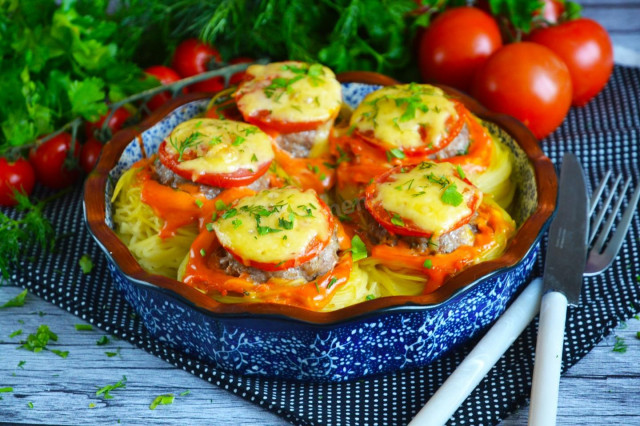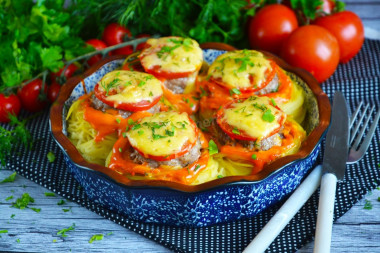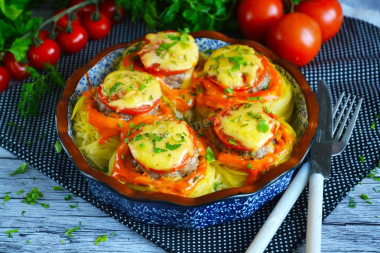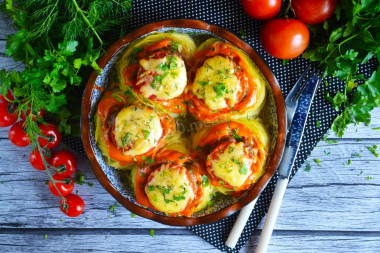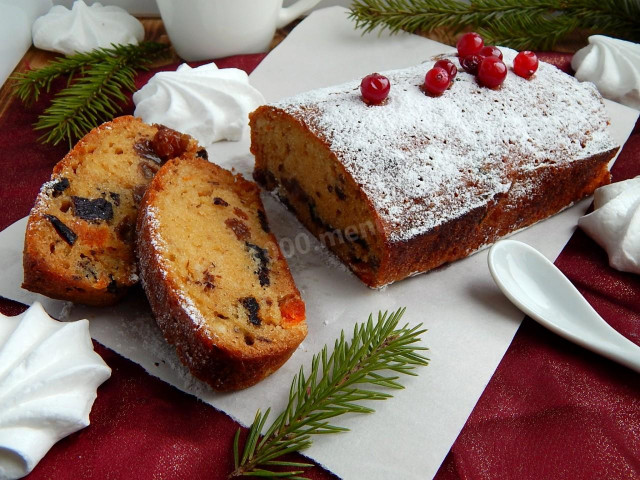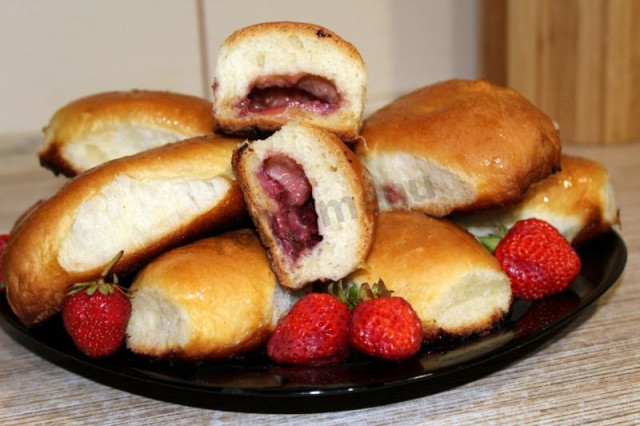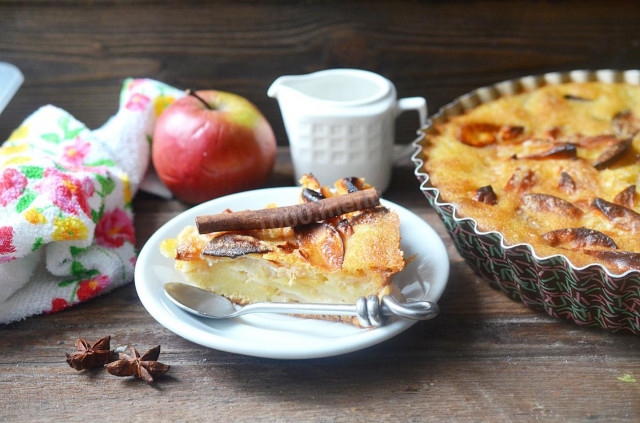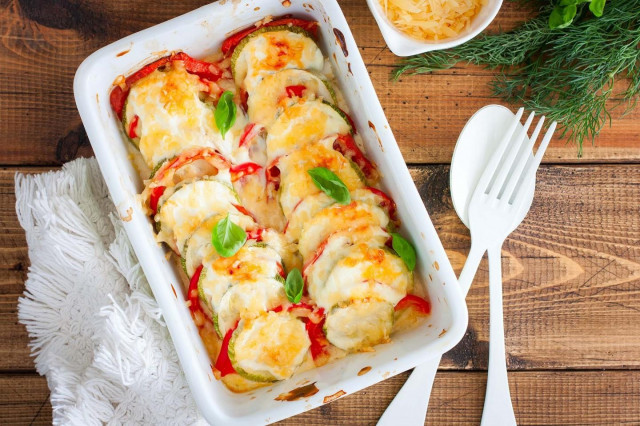Composition / ingredients
Step-by-step cooking
Step 1:
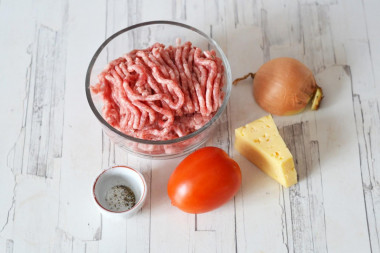
How to bake pasta nests with minced meat in the oven? First, prepare the necessary ingredients according to the list. To begin, prepare the filling. You can use any minced meat - pork, beef or mixed, like mine. It is only desirable that the minced meat is not very fatty category, A or B.
Step 2:
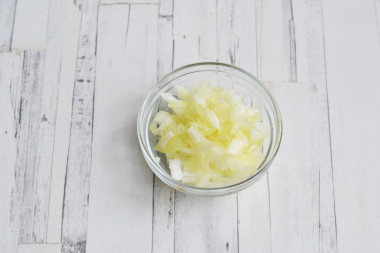
Peel the onion and finely chop it.
Step 3:
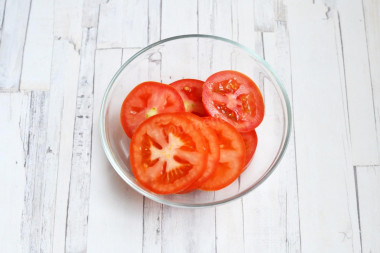
Wash the tomato, dry it and cut it into circles. Choose juicy tomatoes, but dense. Soft fruits do not keep their shape well, in the process of slicing and cooking they will spread into a shapeless mass and spoil the appearance of the dish.
Step 4:
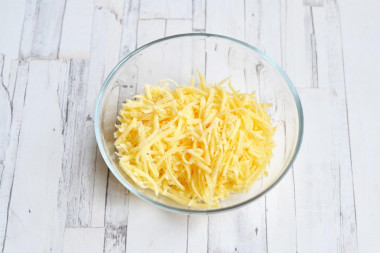
Grate the cheese on a coarse grater.
Step 5:
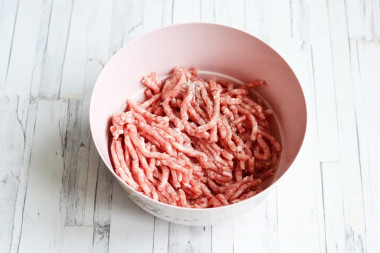
In a bowl, combine the onion and minced meat.
Step 6:
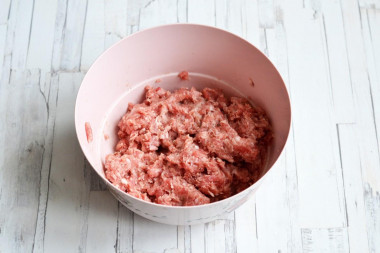
Add salt, pepper and mix until smooth.
Step 7:
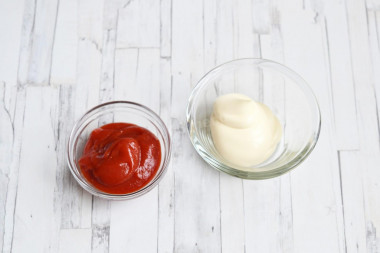
Now prepare the sauce.
Step 8:
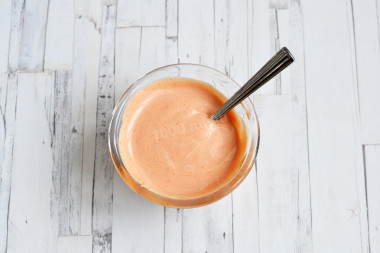
Combine ketchup with mayonnaise and mix until smooth.
Step 9:
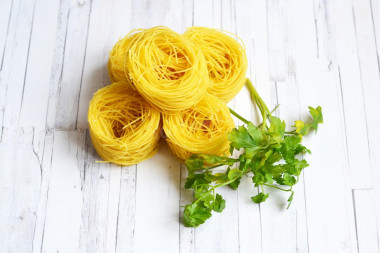
Now get busy preparing the pasta nests. There are different types of such pasta. I have spaghetti nests, there are nests of thin flat pasta of different widths. Choose the ones that you like the most. In addition to these greens, you can use another one to taste: cilantro, basil, etc.
Step 10:
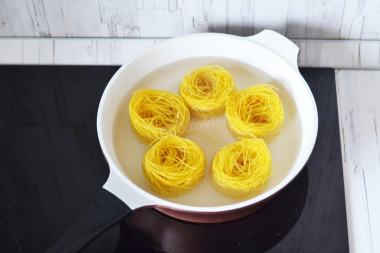
In a saucepan or a large frying pan with a thick bottom, boil water and add salt. The water should not boil too much, otherwise the nests can quickly lose their shape. It is better to bring the water to a boil and turn down the heat. Dip the pasta nests into the water and boil over low heat for about 2-3 minutes. The water should reach the nests above the middle or almost completely cover them.
Step 11:
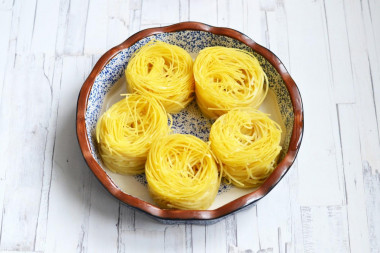
Carefully transfer the nests with a slotted spoon into a greased baking dish. Only 5 nests fit into my form, so I baked the second batch in a different form. Save the water from the pasta.
Step 12:
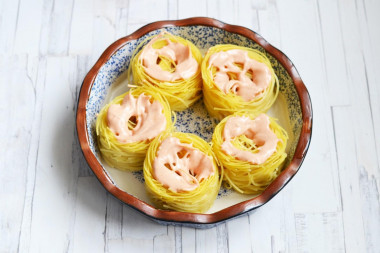
Grease the nests with tomato-mayonnaise sauce. So the pasta will turn out more juicy and tasty.
Step 13:
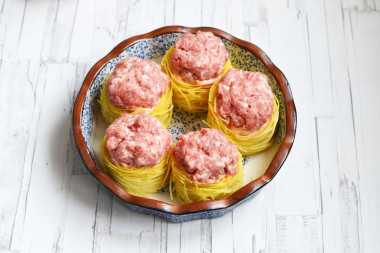
Put the minced meat in the recesses. I had enough minced meat for 8 nests.
Step 14:
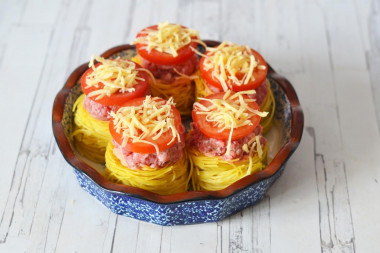
Spread the tomato slices on top of the minced meat and sprinkle with grated cheese on top.
Step 15:
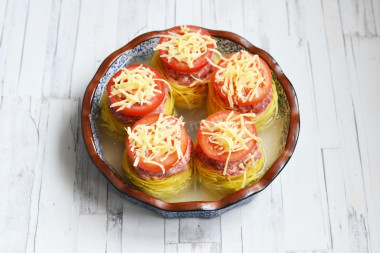
Pour the remaining broth from cooking pasta into the mold. The exact amount of broth depends on the size of your mold and the number of nests that fit into it. It is important that the water does not reach the very edges of the mold, because when boiling, the broth will overflow over the edges of the mold and drip into the oven. In general, I advise you to put a double piece of foil or parchment under the mold.
Step 16:
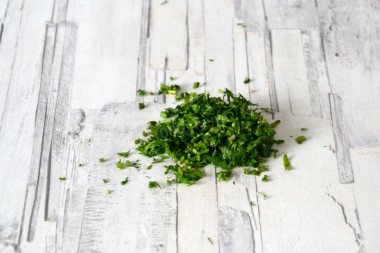
While the nests are being baked, wash the greens and chop them finely.
Step 17:
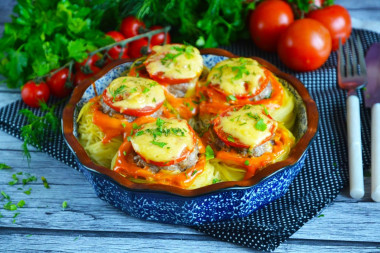
Put the mold in a preheated 180 ° C oven for 30-35 minutes. The exact baking time depends on the characteristics of your oven, the thickness of the meat filling. The whole broth will be almost completely absorbed into the pasta, the nests will swell and increase in size. Remove the finished nests from the oven, sprinkle with chopped herbs and serve hot. Bon appetit!
Keep in mind that everyone's ovens are different. The temperature and cooking time may differ from those specified in the recipe. To make any baked dish successful, use useful information about the features of ovens !
Since the degree of salinity, sweetness, bitterness, sharpness, acid, burning is individual for everyone, always add spices, spices and seasonings, focusing on your taste! If you put some of the seasonings for the first time, then keep in mind that there are spices that it is especially important not to shift (for example, chili pepper).
How to properly replace different types of cheeses in dishes read in this article.
Caloric content of the products possible in the composition of the dish
- Onion - 41 kcal/100g
- Tomatoes - 23 kcal/100g
- Dutch cheese - 352 kcal/100g
- Swiss cheese - 335 kcal/100g
- Russian cheese - 366 kcal/100g
- Kostroma cheese - 345 kcal/100g
- Yaroslavsky cheese - 361 kcal/100g
- Altai cheese 50% fat content - 356 kcal/100g
- Soviet cheese - 400 kcal/100g
- Cheese "steppe" - 362 kcal/100g
- Uglichsky cheese - 347 kcal/100g
- Poshekhonsky cheese - 350 kcal/100g
- Lambert cheese - 377 kcal/100g
- Appnzeller cheese with 50% fat content - 400 kcal/100g
- Chester cheese with 50% fat content - 363 kcal/100g
- Edamer cheese with 40% fat content - 340 kcal/100g
- Cheese with mushrooms of 50% fat content - 395 kcal/100g
- Emmental cheese with 45% fat content - 420 kcal/100g
- Gouda cheese with 45% fat content - 356 kcal/100g
- Aiadeus cheese - 364 kcal/100g
- Dom blanc cheese (semi-hard) - 360 kcal/100g
- Lo spalmino cheese - 61 kcal/100g
- Cheese "etorki" (sheep, hard) - 401 kcal/100g
- White cheese - 100 kcal/100g
- Fat yellow cheese - 260 kcal/100g
- Altai cheese - 355 kcal/100g
- Kaunas cheese - 355 kcal/100g
- Latvian cheese - 316 kcal/100g
- Limburger cheese - 327 kcal/100g
- Lithuanian cheese - 250 kcal/100g
- Lake cheese - 350 kcal/100g
- Gruyere cheese - 396 kcal/100g
- Ground black pepper - 255 kcal/100g
- Parsley greens - 45 kcal/100g
- Dill greens - 38 kcal/100g
- Salad mayonnaise of 50 % fat content - 502 kcal/100g
- Light mayonnaise - 260 kcal/100g
- Provencal Mayonnaise - 624 kcal/100g
- Provencal mayonnaise - 627 kcal/100g
- Table mayonnaise - 627 kcal/100g
- Mixed minced meat - 351 kcal/100g
- Salt - 0 kcal/100g
- Ketchup - 93 kcal/100g
- Pasta nests - 346 kcal/100g

